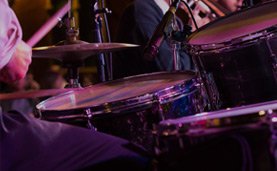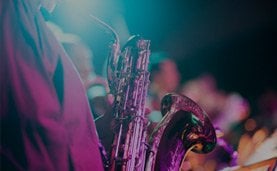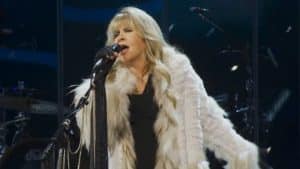Revisiting The First TV Appearance Of The Doors

via @JimJohnRayRobby / YouTube
In the early days of 1967, The Doors were still just another hungry band emerging from the crowded Los Angeles club scene. But on January 1, they took a small yet meaningful step into the wider public eye with their first television appearance. It wasn’t a national debut or a major network showcase—it happened on Shebang, a local teen dance show broadcast on KTLA-TV Channel 5. The performance came and went quickly, but it marked the first time the band’s image and sound were broadcast to viewers beyond the smoky confines of Sunset Strip venues.
Hosted by a young Casey Kasem, Shebang was typical of the era’s youth programming: fast-paced, music-driven, and filled with lip-synched performances from pop acts. When The Doors took the stage to perform “Break on Through (To the Other Side),” their approach was noticeably different. Dressed in dark clothes, barely moving, and exuding a quiet menace, they didn’t play to the crowd or flash smiles. Their presence was stark and serious—a contrast to the bubblegum acts that usually passed through the show.
For those watching, the band’s moodiness may have seemed out of place—or strangely captivating. Either way, this modest appearance would soon be eclipsed by the rapid ascent that followed. Within weeks, The Doors’ debut album would be released. And though this performance didn’t catapult them into stardom, it planted a flag. It was their first real signal to the world: they were here, and they had something different to say.
A Bold Introduction to the Underground
“Break on Through” was The Doors’ debut single, and it served as a bold manifesto for what the band stood for—psychedelia, rebellion, and poetic mysticism. Written collaboratively, the song combined Jim Morrison’s provocative lyrics with a driving rhythm section and Ray Manzarek’s signature keyboard lines, drawing influences from bossa nova, jazz, and rock. It was an unusual sound for radio in late 1966, which made it stand out both musically and thematically.
Despite its energy and innovation, the song struggled commercially upon release. One significant reason was radio censorship. The line “she gets high,” heard repeatedly in the song’s bridge, drew the ire of conservative programmers who found its implied drug reference inappropriate. As a result, the line was often removed or obscured in the final mix sent to radio stations, muting one of the track’s central themes and limiting its appeal.
The single peaked at only No. 126 on the Billboard chart—a disappointing start considering the buzz surrounding their live performances in Los Angeles clubs. Still, “Break on Through” would later be reevaluated as one of the band’s quintessential tracks, celebrated for its raw energy and uncompromising vision. It served as the first signal that The Doors weren’t interested in playing by the rules.
Psychedelia Meets Censorship
The Doors’ television debut occurred at a cultural crossroads. In 1967, America was on the brink of the Summer of Love, and the countercultural movement was gaining momentum. Psychedelic rock, Eastern philosophies, and political unrest were beginning to shape a new youth identity. Yet, mainstream media—especially television and radio—remained heavily censored, wary of promoting what was seen as subversive or dangerous content.
The line “she gets high” in “Break on Through” represented more than just a drug reference—it was a challenge to the sanitized norms of 1960s broadcasting. The record label attempted to make the song more radio-friendly by lowering the vocal level during the controversial lyric, essentially self-censoring it. This compromise failed to satisfy either side: the song didn’t receive widespread radio support, and fans of underground music found the edit disingenuous.
This early conflict between The Doors and the gatekeepers of mass media would become a recurring theme throughout their career. Their later clashes—most notably their infamous appearance on The Ed Sullivan Show where Morrison defiantly sang “girl, we couldn’t get much higher” on live TV—can trace their origins to this quieter but equally telling moment on Shebang. It was the first hint that The Doors wouldn’t bow to convention.
View this post on Instagram
A Glimpse Before the Storm
Although their Shebang appearance didn’t catapult The Doors into instant fame, it now holds historical value as a rare document of the band on the cusp of their meteoric rise. Within just a few weeks of this local broadcast, their self-titled debut album would be released, containing future classics like “Light My Fire” and “The End.” By summer, they would dominate both the charts and the headlines.
Footage of the Shebang performance still circulates among fans and rock historians, treasured for its rawness and rarity. It captures a moment when The Doors were still just another hopeful L.A. band, not yet weighed down by fame, controversy, or Morrison’s growing mythology. The restrained nature of the performance contrasts sharply with their later explosive television appearances and concert footage.
Looking back, that New Year’s Day performance feels like the calm before the storm. It was a brief, subdued introduction to a band that would soon become one of the most controversial and influential acts in rock history. The performance on Shebang may not have broken them into the mainstream, but it was the first televised footstep in a journey that would leave an indelible mark on music and culture.




















